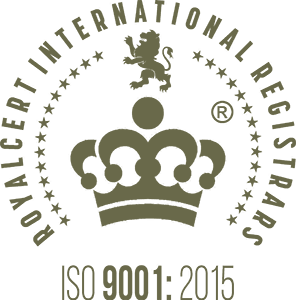Implementing Paperless Maintenance Documentation Systems in Aviation
Aviation service providers across the industry value chain are discovering the transformative power of paperless aircraft maintenance systems. The shift from traditional paper-based processes to digital solutions is not just a trend—it’s a necessity for modern aviation operations.
The Need for Change
For decades, the aviation industry relied heavily on paper documentation for maintenance procedures, work orders, and regulatory compliance. However, this approach has significant drawbacks:
- Inefficiency in data retrieval and updates
- Increased risk of human error
- Storage and transportation challenges
- Environmental impact of paper consumption
Benefits of Paperless Aircraft Maintenance
There are numerous advantages of a paperless system:
- Real-time data access: Technicians can instantly access up-to-date maintenance manuals, work orders, and aircraft history.
- Improved accuracy: Digital systems reduce transcription errors and ensure data integrity.
- Enhanced compliance: Regulatory requirements can be automatically tracked; compliance reports be easily and quickly generated.
- Cost reduction: The costs of printing, storage, and transportation associated with paper documentation are dramatically reduced.
- Environmental sustainability: Significant reduction in paper waste aligns with industry-wide sustainability goals.
Key Components of a Paperless System
A comprehensive paperless aircraft maintenance system typically includes:
- Electronic Technical Log (ETL): Replaces paper-based aircraft technical logs with digital records.
- Electronic Task Cards: Digital versions of maintenance task cards that can be updated in real-time.
- Mobile Devices: Tablets or smartphones for technicians to access and input data on the go.
- Cloud-based Storage: Secure, centralized storage for all maintenance documentation and records.
- Integration with ERP Systems: Seamless connection with enterprise resource planning systems for comprehensive operational oversight.
Implementation Challenges and Solutions
While the benefits are clear, implementing a paperless system comes with challenges:
- Regulatory Compliance: Companies must work closely with aviation authorities to ensure the digital system meets all regulatory requirements.
- Training: The shift requires significant investments in comprehensive training programs for staff to adapt to the new digital workflows.
- Data Security: Digital systems must be enhanced with robust cybersecurity measures to protect sensitive maintenance data.
- Change Management: The transition from paper to digital must be conducted in phases. It must be gradually developed and implemented to minimize problems and allow for continuous troubleshooting and debugging to deliver a seamless service.
Case Study: Lufthansa Technik’s Digital Transformation
Lufthansa Technik, a global leader in aircraft maintenance was a digital pioneer as one of the first MRO service providers to successfully implement a paperless maintenance system across its operations. The company has reported :
- reduction in maintenance turnaround times
- significantly lower data entry errors
- improvements in regulatory compliance efficiency
- significant cost savings in paper and storage expenses
“Our colleagues working on the aircraft appreciate the new application. It brings noticeable relief in terms of necessary documentation work and allows personnel to concentrate more on their technical work.” Dr. Rainer Sebus, Lufthansa Technik
The Future of Paperless Aircraft Maintenance
As technology continues to evolve, expect further advancements in paperless maintenance systems:
- Artificial Intelligence: AI-powered predictive maintenance and automated troubleshooting.
- Augmented Reality: AR-assisted maintenance procedures for enhanced accuracy and efficiency.
- Blockchain: Improved traceability and security of maintenance records.
Conclusion
Implementing paperless aircraft maintenance systems is no longer a luxury—it’s a necessity for aviation companies looking to stay competitive, efficient, and compliant in the modern era. Digital transformations have the power to significantly improve MRO and airline operations, reduce costs, and contribute to a more sustainable aviation industry. As we move forward, the question is no longer whether to go paperless, but how quickly and effectively we can make the transition.
The future of aviation maintenance is digital, and the time to act is now.
KAMS Global are aviation experts with extensive experience in the Middle East, particularly Saudi Arabia. Underpinned by global alliances and local partnerships, our work spans airports, airlines, certifications and maintenance. We are working with local and global partners to build vital aviation infrastructure, optimize airlines and airports, enhance maintenance and repair operations and facilitate the transfer of knowledge and technology to build local capability in the Middle East. To work with us, get in touch with one of our aviation specialists.
Photo credit: Gerd Altmann from Pixabay



